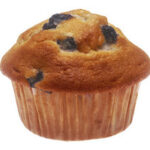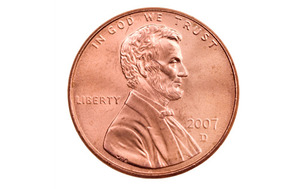Baking is as much an art form as it is a science. Though creativity makes for luscious cakes, the right balance of ingredients and the proper application is necessary for successful results. Even when you follow a recipe, though, the cake may still collapse in the middle. The causes for this baking breakdown are varied, but are largely avoidable.
Freshness and Temperature
Baking powder is a leavening agent and so helps your cake to rise properly. If the baking powder is expired, the elements in the powder do not trigger the necessary formation of gases within the batter. Your cake, then, isn’t gassy enough to hold together and the middle falls downward.
Temperature also influences how certain ingredients behave. Allow the eggs, and always use fresh eggs, to reach room temperature before you mix the batter. Eggs act as an emulsifier, helping to bring the cake together. If they are cold when added to the creamed butter and sugar, the mixture may not hold together properly, causing the cake to fall.
Milk or other liquids, as well as the fats, such as butter or oil, should all be fresh and brought to room temperature. This ensures each ingredient interacts properly with the other ingredients.
Proper Mixing
The process by which you bring the ingredients together is just as important as the quality of those ingredients. When creaming the sugar and butter, for example, the goal is to blend the two ingredients so they can ‘accept’ the eggs and the eggs can then hold them together throughout the cooking process.
If the sugar and butter are too soupy, the eggs are not as effective as an emulsifying agent and the cake collapses when heated in the oven.
Overbeating after the dry ingredients are added may also cause the cake to fall in the middle. Too much air in the batter makes the cake rise too quickly, and then collapse.
Mix the butter and sugar only until blended, and the mixture feels slightly grainy to the touch. Beat in the dry ingredients just until they are fully moistened. The batter should drip from a wooden spoon but shouldn’t be runny.
Oven Temperature
You may notice on many recipes the author makes note that cooking times may vary according to oven temperatures. The actual temperature of an oven may differ by a few degrees, which influences cooking times. Other factors affect the interior temperature as well, such as the age and effectiveness of the door seal and accuracy of the controls.
You may set your oven to 350 degrees, but if it ‘runs hot’, and so the temperature is higher, your cake may rise too quickly. The middle then puffs up and cracks. This may also cause your cake to remain flat, that is, it doesn’t rise at all and the cake, while fully cooked, is overly dense.
If your cakes are falling in the middle, though, your oven temperature is too low. Use an oven thermometer to get an accurate reading of the internal temperature and adjust the temperature accordingly. Check the door seals and temperature controls if your oven temps are more than a few degrees off from the setting.
Peeking
While the cake bakes, it’s tempting to open the oven door and take a peek to see how the cake is progressing. This lowers the internal temperature of the oven, however, and may result in causing the cake to fall in the middle. Set the timer for the recommended time in the recipe and leave the door closed.
Check for doneness only when the cake has been in the oven for the allotted time. Slide a toothpick or the tip of a wooden skewer into the center of the cake. If it comes out clean, the cake is done.
Resources:
What’s Cooking America
Joy of Baking
Diana’s Desserts
The Baking Pan
Further Reading:
What to Look for When Buying a Freestanding Kitchen Range
How to Write a Recipe
Five Essential Tools for Your Kitchen






